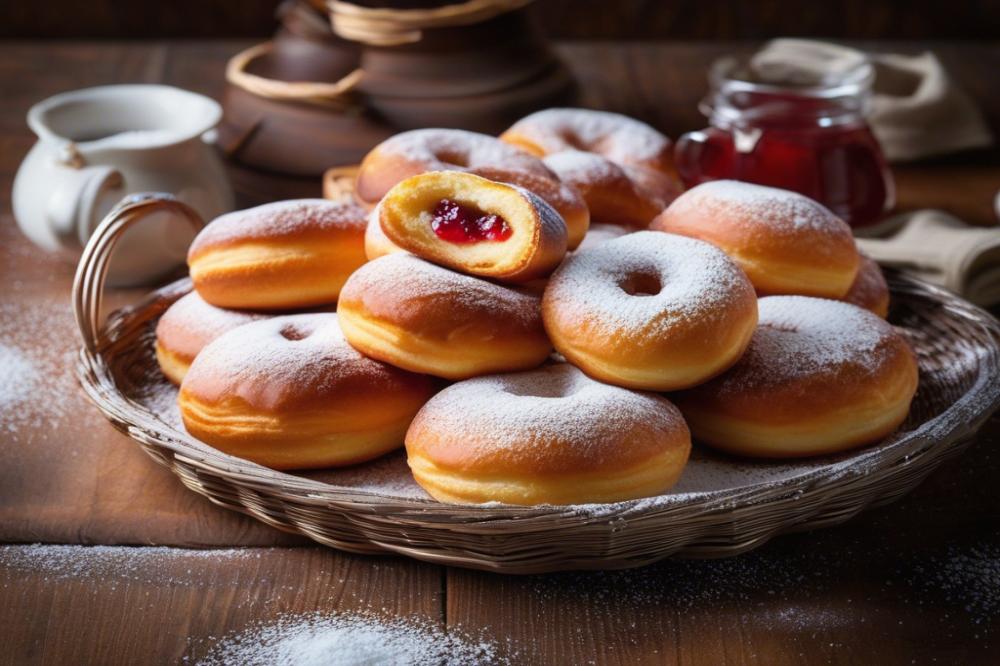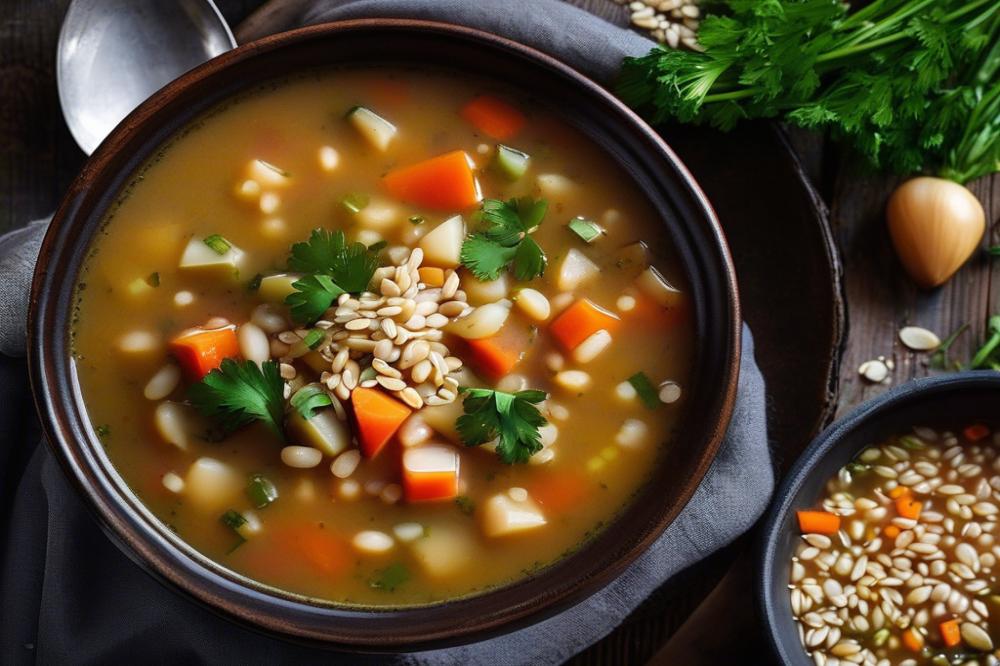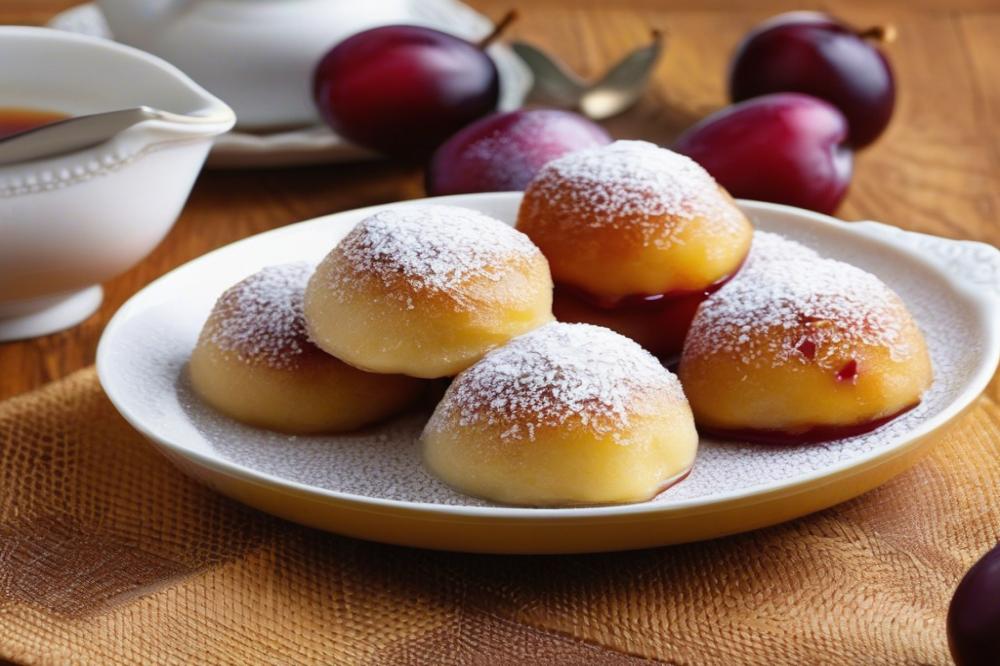Introduction
recipebix.com/polish-babka-recipe-sweet-yeast-cake-with-raisins”>Pączki, a cherished staple of Polish cuisine, are more than just delightful sweet treats. These indulgent pastries hold a special place in the hearts of many, especially during festive times. They are rich, filled with jam, and fried dough that melts in your mouth. Many people eagerly anticipate their arrival each year.
Culturally, Pączki are steeped in tradition. They are often considered a traditional dessert, enjoyed by families and friends alike. This dish symbolizes the end of winter and the arrival of spring, marking a time of celebration and indulgence.
During Fat Thursday, which occurs before Lent, these delicious Polish doughnuts are especially popular. People indulge, savoring their favorite flavors and relishing the moment. The Carnival season brings a lively atmosphere where these treats shine, reminding everyone of the joy in sharing. Each bite becomes a taste of history and communal spirit, making Pączki an integral part of Polish food culture.
What are Pączki?
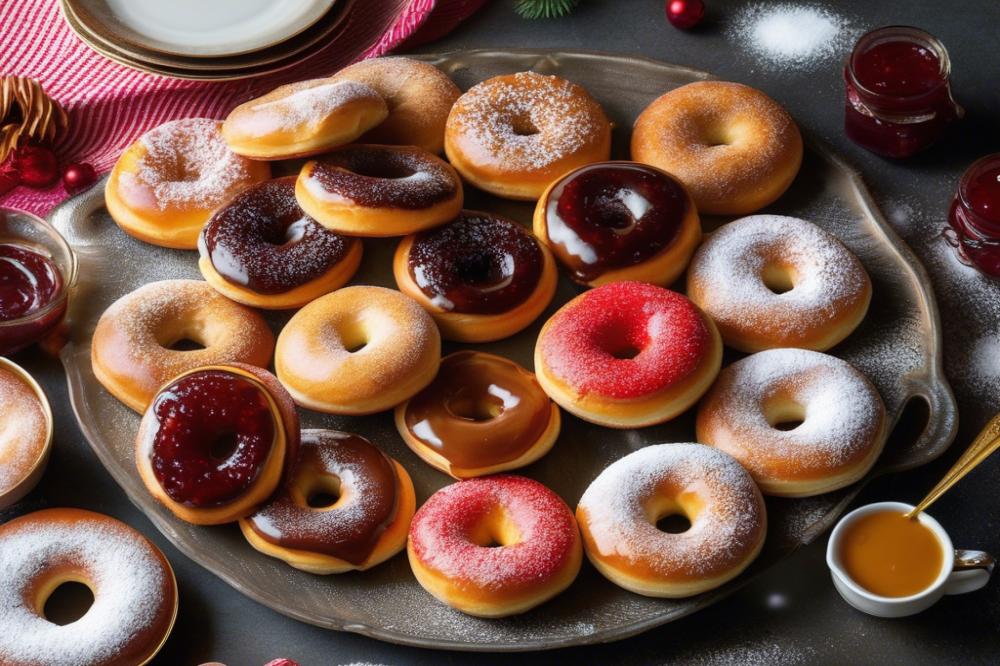
Pączki are a traditional Polish dessert often described as doughnuts. These sweet treats typically feature a light, fluffy texture and are filled with delicious jam filling. Their rich flavor and delightful sweetness have made them a favorite in Polish cuisine and beyond.
The history of pączki is as rich as their taste. Originating in Poland, these indulgent pastries date back to medieval times. They were initially created to use up leftover ingredients before Lent, making them a practical choice for families. As time passed, pączki evolved from simple fried dough into a beloved Carnival food, especially consumed on Fat Thursday, known in Polish as Tłusty Czwartek.
Variations in fillings and flavors showcase the creativity behind these delightful treats. Common fillings include fruity jams, custards, and delicate creams. Some popular choices are raspberry, strawberry, and even rose petal jam. Bakers often experiment with flavors, introducing combinations of chocolate or lemon to create a unique twist.
Pączki hold a special place in Polish culture, serving as a symbol of celebration. Their popularity peaks during Carnival season, particularly on Fat Thursday. On this day, families and friends gather to share pączki and enjoy each other’s company. Such gatherings highlight the importance of food in creating memories and fostering community.
Pączki Recipe: Ingredients and Cooking Instructions
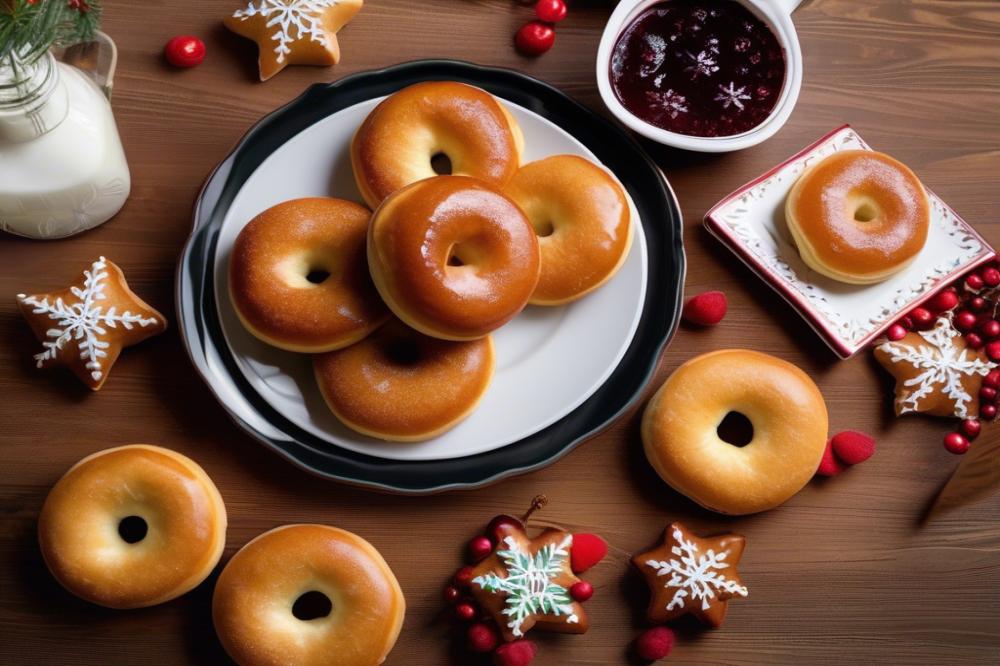
Ingredients
- 4 cups all-purpose flour
- 1/2 cup sugar
- 1/2 teaspoon salt
- 2 teaspoons active dry yeast
- 1 cup whole milk
- 4 large egg yolks
- 1/4 cup unsalted butter, melted
- 1 teaspoon vanilla extract
- 1 cup fruit jam filling (e.g., raspberry or strawberry)
- Oil for frying
Cooking Instructions
Begin by preparing the dough. First, mix the flour, sugar, and salt in a large bowl. Then, activate the yeast by combining it with warm milk in a separate container. Stir until it dissolves, then add the egg yolks, melted butter, and vanilla extract. Gradually add this mixture to the dry ingredients. Blend everything together until a sticky dough forms.
The next step is fermentation. Cover the bowl with a clean towel and put it in a warm spot. Allow the dough to rise for about an hour or until it doubles in size. This process is essential. It helps develop the texture and flavor characteristic of these traditional desserts.
After fermentation, turn the dough onto a floured surface. Roll it out to about 1/2 inch thick. Now, it’s time to shape each piece. Cut the dough into circles using a biscuit cutter. Place a dollop of jam filling in the center of half the circles. Top them with the remaining circles and pinch the edges to seal them securely.
Next comes frying. Heat oil in a deep pan to 350°F (175°C). Carefully drop each pączki into the hot oil, a few at a time. Fry them for around 3-4 minutes on each side until they are golden brown. Use a slotted spoon to remove them and place them on paper towels to drain the excess oil.
Finally, add the finishing touches. Once the fried dough has cooled slightly, dust them generously with powdered sugar. This step is what turns these indulgent pastries into irresistible sweet treats.
Nutritional Information
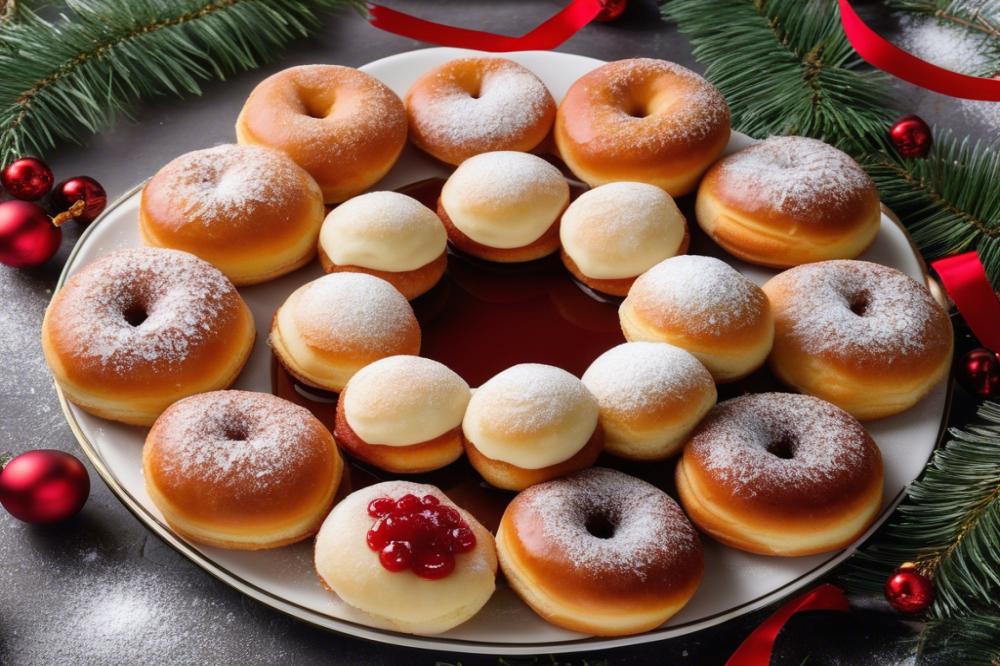
When diving into the world of Pączki, it’s essential to consider the nutritional content of this beloved traditional dessert. Each ingredient contributes to the overall complexity of flavors while providing various nutrients. Typically, a Pączek contains flour, sugar, butter, eggs, milk, yeast, and jam filling. These components come together to create a delightful fried dough that’s often enjoyed during Fat Thursday and Carnival festivities.
The caloric value of one Pączek can range from 300 to 400 calories. This figure depends on the specific recipe and the amount of filling used. On average, you can expect around 15-25 grams of fat per pastry. Much of this comes from butter, which gives the dough its rich taste and texture. Remember, while the flavor is irresistible, the fat content may surprise those unfamiliar with Polish cuisine.
When it comes to carbohydrates, one Pączek packs a punch, providing about 40-50 grams. This high number is mostly made up of sugars and starch from the flour. Sugar content can vary significantly depending on how sweet the jam filling is. A generous dollop of fruit preserves adds sweetness that pairs perfectly with the dough.
Setting the Pączki apart is their indulgent nature. These pastries are not everyday snacks; they’re a treat for special occasions. Enjoying one does mean indulging in something rich and satisfying. Many people savor just one as a way to celebrate. After all, they hold a special place in the hearts of those who appreciate authentic Polish food.
Serving Suggestions and Pairings
When it comes to serving pączki, the options are delightfully varied. They are excellent as a breakfast treat or a mid-morning snack. Consider dusting them with powdered sugar or drizzling a light glaze for an extra touch of sweetness. Serve them warm for the best experience. This traditional dessert pairs wonderfully with a side of fresh fruit, such as berries or citrus. The natural tartness of these fruits balances the rich sweetness of the fried dough.
For beverages, coffee is a classic companion. A well-brewed cup enhances the flavors of these indulgent pastries remarkably. On chilly days, hot chocolate can also serve as a delightful pairing. Its creamy texture contrasts beautifully with the flaky exterior of the doughnut. If you’re feeling adventurous, consider a fruity tea. The lightness of tea offers a unique balance to the sweet treats.
Leftover pączki can become a culinary adventure on their own. Try warming them up in the oven for a few minutes to revive their fresh taste. They also make an interesting twist in desserts. Slice a pączek in half and fill it with ice cream or whipped cream for a fun sundae. Crumbling leftover pieces on top of yogurt creates a delicious parfait that transforms breakfast into something special. Baking, frying, or reimagining your treats keeps the enjoyment going longer!
Cultural Significance of Pączki
These delightful fried dough balls hold a special place in Polish culture. They are more than just a sweet treat; they represent joy and celebration. Throughout Poland, various festivals and holidays highlight the importance of this traditional dessert. People eagerly await these moments to indulge in delicious pastries filled with jam or other sweet fillings.
Role of Pączki during Polish Festivals and Holidays
Many Polish families celebrate with pączki during significant festivities. Fat Thursday, for example, marks the beginning of the Lent season. On this day, people feast on these indulgent pastries before the period of fasting begins. Bakeries often sell out quickly as everyone rushes to get their share. This day is not just about the food; it’s about sharing experiences and memories with family and friends.
Connection to Traditions such as Fat Thursday
Tradition dictates that on Fat Thursday, everyone should enjoy at least one of these fried dough delights. Recipes vary from family to family, passed down through generations. Each person often has their favorite jam filling, whether it’s raspberry, rose, or a delightful cream. These flavors have a way of connecting people to their heritage, creating a nostalgic experience. On this day, laughter fills the air, and discussions revolve around childhood memories related to baking pączki.
Personal Anecdotes and Stories Related to Pączki
Many individuals have fond memories tied to this treat. A common story is about a grandmother baking the doughnuts with her grandchildren. It often involved flour-covered counters and laughter as they waited for the warm pastries to cool. These moments remind everyone of their roots and the warmth of family gatherings. Festivals and light-hearted conversations make these tasty creations even more meaningful.
Sharing stories about pączki during gatherings allows people to create connections. It is not just a recipe; it signifies love and community. Each pączek consumed carries with it the joy of sharing, the excitement of celebration, and the comfort of tradition. When you bite into one, you’re not just enjoying a dish from Polish cuisine, you’re experiencing a rich history.
Final Thoughts on Making Pączki
Pączki are a delightful treat that pair well with coffee or tea. This recipe reflects not just the flavors of Poland but also the heart of its culinary traditions. Every bite is rich with history, reminding us of celebrations and gatherings. These doughnuts, filled with jam filling, symbolize indulgence before Lent.
Trying to make them at home can be a rewarding experience. There’s something special about kneading dough and watching it rise. Your kitchen will fill with sweet scents as they fry. Sharing these treats with friends or family brings joy to any occasion.
Explore the world of Polish cuisine beyond just this recipe. Discover other classic dishes that showcase the country’s rich flavors and vibrant history. Learning to cook these meals can deepen your appreciation for the culture. So roll up your sleeves and give it a shot. You might just find a new favorite tradition in making your own pączki!

